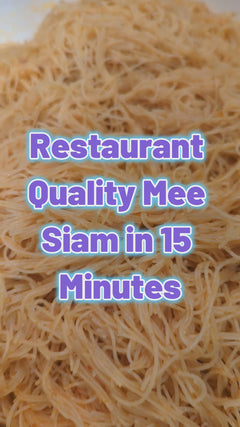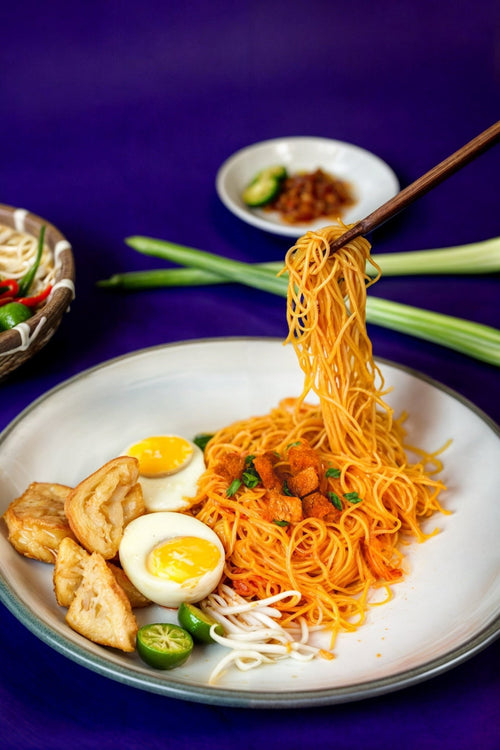Up to 20% off! Visit the product page for details.
Mee Siam, a beloved dish in Southeast Asian cuisine, is renowned for its complex and tangy flavors. This noodle dish, traditionally enjoyed hot, reveals a delightful twist when served at room temperature. The secret? Room temperature allows the umami flavors to shine, transforming the Mee Siam experience into something even more magical.
Unlocking Umami Flavors
Umami, often referred to as the "fifth taste," is a savory flavor that enhances the overall taste profile of a dish. This flavor is particularly prevalent in ingredients like fermented soybean paste, tamarind, and dried shrimp—all key components of Mee Siam. When served hot, the intensity of these flavors can sometimes be overshadowed by the heat. However, as the dish cools to room temperature, the umami flavors become more pronounced, providing a richer and more balanced taste.
The Science Behind Temperature and Flavor
The perception of taste changes with temperature. Here’s why Mee Siam, and many other foods, can taste better at room temperature:
- Aromatic Compounds: At room temperature, the aromatic compounds in Mee Siam are more volatile, making the dish more fragrant and appetizing.
- Balanced Flavors: Cooler temperatures can mellow out the sharpness of acidic ingredients like tamarind, creating a smoother, more harmonious flavor profile.
-
Texture Enhancement: The noodles in Mee Siam become firmer and less mushy when they cool, providing a more enjoyable texture.
Examples of Foods That Taste Different at Various Temperatures
-
Chocolate:
- Cold: When cold, chocolate has a firm texture and a subtle, more muted flavor.
- Room Temperature: At room temperature, chocolate melts more easily in the mouth, releasing its rich, complex flavors.
-
Hot: In hot desserts like molten chocolate cake, the chocolate becomes gooey and intensely flavorful.
-
Cheese:
- Cold: Hard cheeses are often crumbly and less flavorful when cold.
- Room Temperature: Cheese, especially soft and semi-hard varieties, has a creamier texture and a fuller flavor at room temperature.
-
Hot: Melted cheese is gooey and has a strong, savory flavor, ideal for dishes like pizza and grilled cheese sandwiches.
-
Wine:
- Cold: White wines and rosés are typically served chilled to enhance their crisp, refreshing qualities.
- Room Temperature: Red wines are usually enjoyed at room temperature, which allows their complex flavors and aromas to fully develop.
-
Warm: Overly warm wine can taste overly alcoholic and lose its subtle flavors.
-
Butter:
- Cold: Cold butter is firm and difficult to spread, with a mild flavor.
- Room Temperature: At room temperature, butter is soft, spreadable, and has a richer, more pronounced taste.
-
Hot: Melted butter is liquid and has a distinct, robust flavor, ideal for cooking and baking.
-
Bread:
- Cold: Cold bread can be dense and chewy.
- Room Temperature: Bread at room temperature is soft and has a balanced flavor and texture.
- Hot: Freshly baked bread is warm, with a crispy crust and a soft, fluffy interior, releasing an irresistible aroma.
Conclusion
Next time you prepare Mee Siam, consider letting it cool to room temperature before digging in. You'll discover a new depth of flavor that highlights the umami notes and provides a more nuanced and satisfying culinary experience. Just like with other foods, the temperature can significantly impact how we perceive flavors, turning a familiar dish into an extraordinary one. So, embrace the magic of room temperature and savor the difference!













